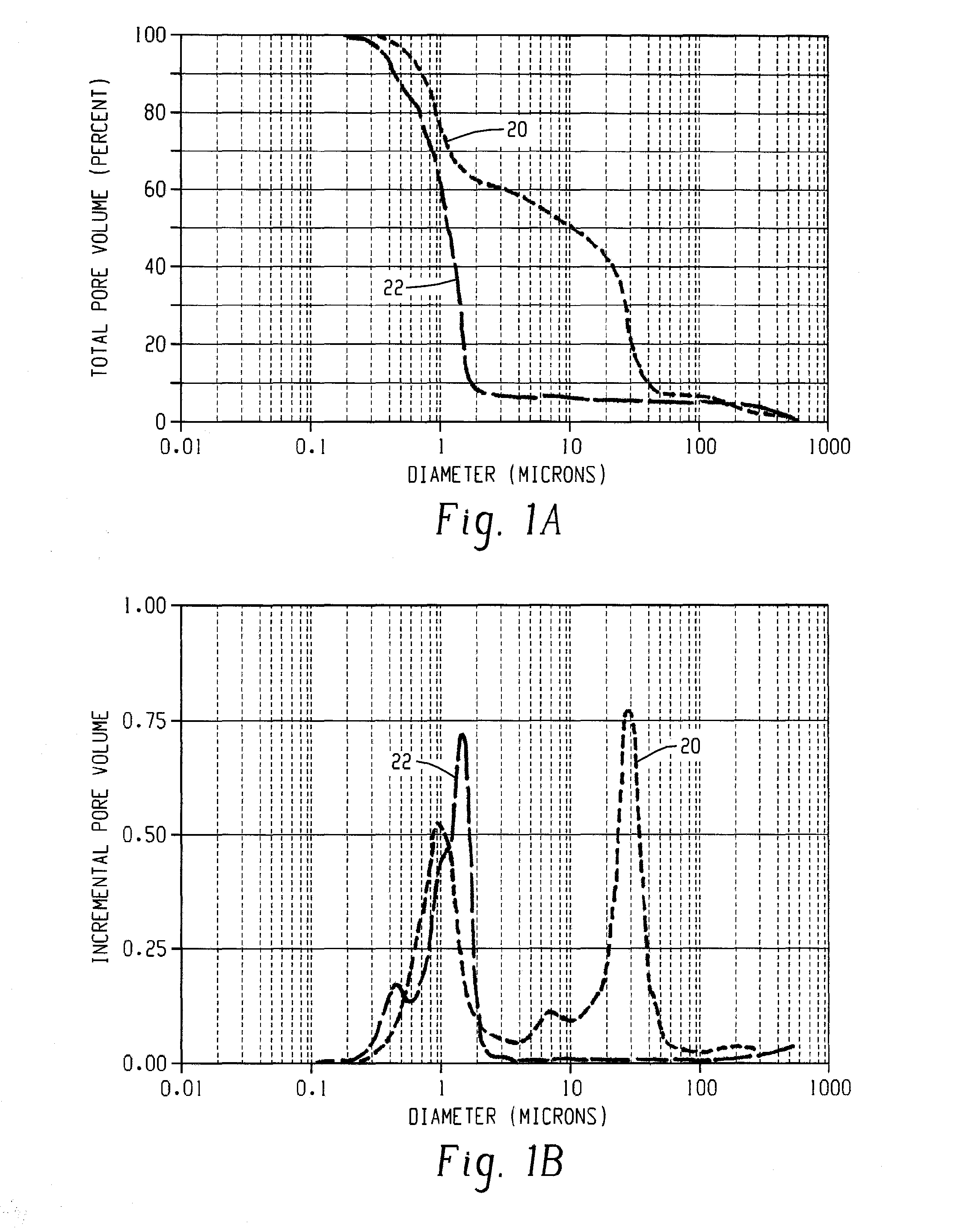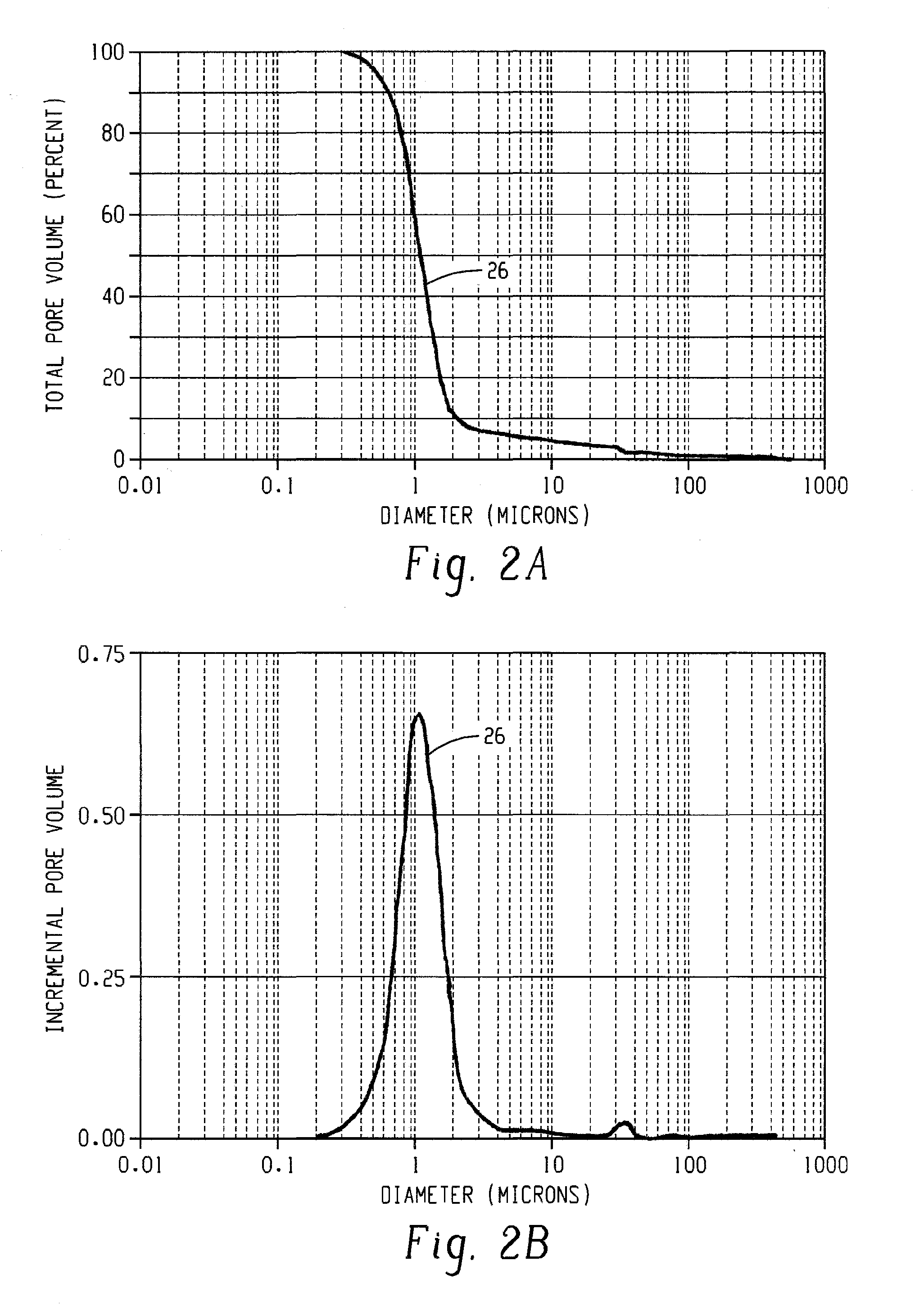Catalyst and catalyst carrier
a carrier and catalyst technology, applied in the field of carriers and catalysts, can solve the problems of inherently incurring costs for stopping the catalyst replacement reactor, affecting the cost of manufacturing, and both positively and negatively affecting the effect of catalyst replacemen
- Summary
- Abstract
- Description
- Claims
- Application Information
AI Technical Summary
Benefits of technology
Problems solved by technology
Method used
Image
Examples
example 2 (
Inventive)
Preparation of Catalyst Based on Carrier B
[0080]Catalyst 2 was prepared in two impregnation steps. Approximately 120 grams of Carrier B was first impregnated with 204 grams of silver solution having a specific gravity of 1.478 g / cc according to the procedure for Catalyst 1, except that no dopants were added to the silver solution. The resulting dried catalyst precursor contained approximately 9.8 wt % silver. The dried Catalyst 2 Precursor was then impregnated with a second solution which was made by mixing 191.0 grams of silver stock solution of specific gravity 1.55 g / cc with a solution of 0.3375 g of NH4ReO4 in 2 g of 1:1 EDA / H2O, 0.0941 g of ammonium metatungstate dissolved in 2 g of 1:1 ammonia / water, 0.1610 g Li2SO4.H2O, 0.1272 g KNO3, and 0.5015 g LiOH.H2O dissolved in water. Additional water was added to adjust the specific gravity of the solution to 1.478 g / cc. 50 grams of such doped solution was mixed with 0.2109 g of 44.8 wt % CsOH solution. This final impregnat...
example 3 (
Inventive)
Preparation of Catalyst Based on Carrier B
[0081]Catalyst 3 was prepared in three impregnation steps. Approximately 120 grams of Carrier B was first impregnated with 204 grams of silver solution having a specific gravity of 1.549 g / cc according to the procedure for catalyst 1, except that no dopants were added to the silver solution. The impregnation / centrifuge / drying procedure was performed a total of two times, resulting in a dried catalyst precursor containing approximately 19.5 wt % silver. The dried Catalyst 3 Precursor was then impregnated with a final solution which was made by mixing 191.9 grams of silver stock solution of specific gravity 1.549 g / cc with a solution of 0.3962 g of NH4ReO4 in 2 g of 1:1 EDA / H2O, 0.1105 g of ammonium metatungstate dissolved in 2 g of 1:1 ammonia / water, 0.1890 g Li2SO4.H2O, 0.1493 g KNO3, and 0.5888 g LiOH.H2O dissolved in water. Additional water was added to adjust the specific gravity of the solution to 1.500 g / cc. To 50 grams of suc...
PUM
| Property | Measurement | Unit |
|---|---|---|
| Length | aaaaa | aaaaa |
| Fraction | aaaaa | aaaaa |
| Fraction | aaaaa | aaaaa |
Abstract
Description
Claims
Application Information
 Login to View More
Login to View More - R&D
- Intellectual Property
- Life Sciences
- Materials
- Tech Scout
- Unparalleled Data Quality
- Higher Quality Content
- 60% Fewer Hallucinations
Browse by: Latest US Patents, China's latest patents, Technical Efficacy Thesaurus, Application Domain, Technology Topic, Popular Technical Reports.
© 2025 PatSnap. All rights reserved.Legal|Privacy policy|Modern Slavery Act Transparency Statement|Sitemap|About US| Contact US: help@patsnap.com


